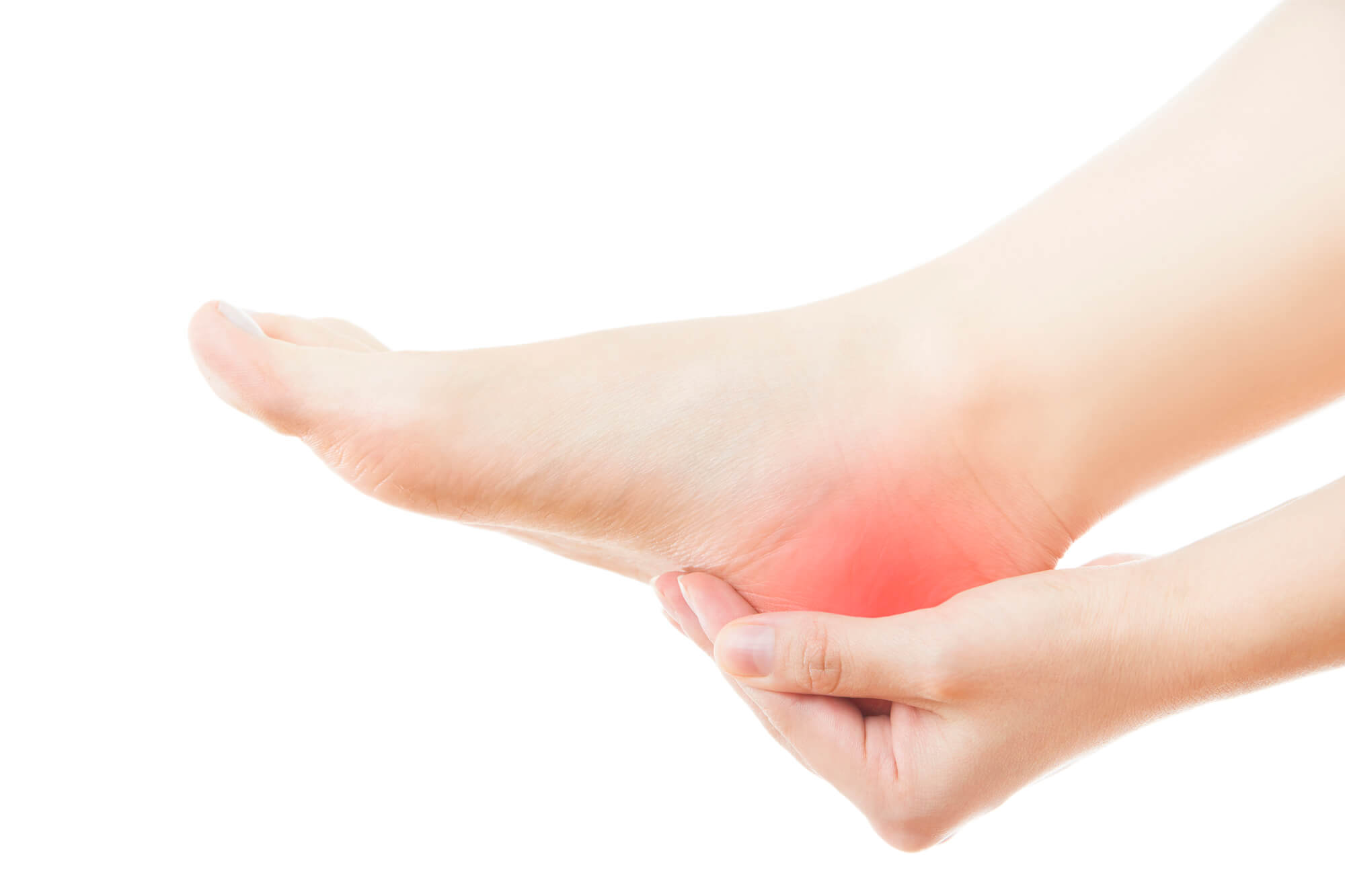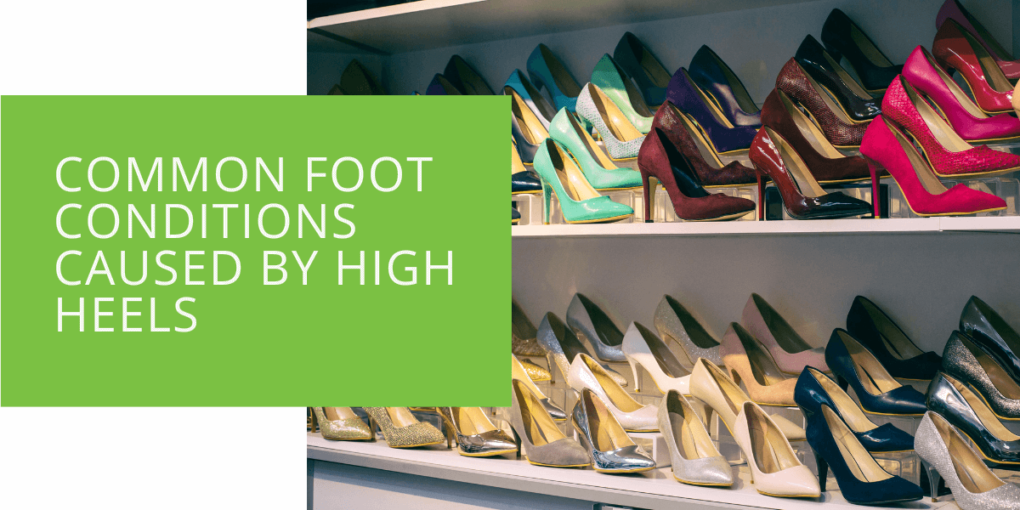Common Foot Conditions Caused by High Heels
High heels are fashionable and versatile and can make a statement when paired with the right outfit. However, wearing high heels can come with a cost. Many women report experiencing foot pain, discomfort, or problems after wearing high heels for an extended period.
In this article, we'll examine the foot conditions that high heels can cause, explain how high heels can lead to these issues, and advise how to prevent them. If you're experiencing foot pain or discomfort, you should consult a podiatrist, a doctor specializing in treating foot and ankle conditions.
Understanding the Mechanics of High Heels
When you wear high heels, you put pressure on the ball of your foot, which can cause pain and soreness. High heels also shorten the Achilles tendon, which can lead to plantar fasciitis and other foot problems. If you wear high heels regularly, you may be more prone to developing foot and ankle problems than someone who wears flat shoes.
Wearing high heels can also cause back pain. When you wear high heels, your weight shifts forward, and your lower back has to compensate for the shift. This extra stress on your lower back can lead to chronic pain or injuries.

Common Foot Conditions Caused by High Heels
1. Plantar Fasciitis
Plantar fasciitis is one of the most common foot conditions that podiatrists see in patients who wear high heels. It's painful when the plantar fascia, the band of tissue that runs along the bottom of your foot, becomes inflamed.
When you wear high heels, your weight is shifted forward, and your toes are pushed into the toe box of your shoe. This can cause the plantar fascia to stretch, leading to inflammation and pain.
Symptoms of plantar fasciitis include pain and stiffness in the heel and arch of your foot. Treatment options may include rest, ice, stretching, and wearing appropriate footwear. A podiatrist can help diagnose and treat this condition.
2. Morton's Neuroma
Morton's neuroma is a condition that occurs when the tissue surrounding the nerve between the third and fourth toes becomes thickened. It can cause a sharp, burning pain in the ball of your foot and can feel like you have a small rock or pebble in your shoe.
Wearing high-heeled shoes can compress the metatarsal bones in the foot, leading to this condition. In severe cases, surgery may be required to remove the neuroma. However, many cases can be managed conservatively with the help of a podiatrist.
3. Ankle Sprains
Wearing high heels can increase your risk of ankle sprains. High heels destabilize your ankle, making it easier to roll it when you step on an uneven surface or twist it when you lose your balance.
Symptoms of an ankle sprain include pain, swelling, and bruising. Treatment options may include rest, ice, compression, and elevation. If you suspect you have an ankle sprain, it's important to seek medical attention from a podiatrist.
4. Achilles Tendonitis
Achilles tendonitis is a condition that occurs when the Achilles tendon becomes inflamed. Wearing high heels regularly can shorten the Achilles tendon, increasing the risk of developing this condition.
Symptoms of Achilles tendonitis include pain and stiffness in the back of your heel. Treatment options may include rest, ice, stretching, and wearing appropriate footwear. If left untreated, Achilles tendonitis can lead to more serious complications, such as a ruptured tendon.

5. Bunions
A bunion is a bony bump that forms on the joint at the base of your big toe. Wearing high-heeled shoes can cause the toes to be forced into the front of the shoe, leading to a deformity of the big toe joint.
Symptoms of bunions include pain, swelling, and redness around the big toe joint. Treatment options may include wearing shoes with a wider toe box, using padding to protect the bunion, or surgery from removing the bunion.
6. Corns and Calluses
Corns and calluses are thick, hardened layers of skin that develop on the feet. They are a result of repeated friction and pressure on the skin. Wearing high-heeled shoes can increase the pressure on the ball of the foot and the toes, developing corns and calluses.
Symptoms of corns and calluses include thickened, rough skin on the feet. Treatment options may include using over-the-counter treatments to soften the skin, using padding to protect the affected area, or seeking treatment from a podiatrist to remove the corn or callus.
7. Hammertoes
Hammertoes are a deformity of the toes that occurs when the toe is bent at the middle joint. Wearing high heels can cause the toes to be forced into an unnatural position, leading to the development of hammertoes.
Symptoms of hammertoes include pain, swelling, and a deformity of the affected toe. Treatment options may include wearing shoes with a wider toe box, using padding to protect the affected area, or surgery to correct the deformity.
8. Ingrown Toenails
Ingrown toenails occur when the nail grows into the surrounding skin, causing pain and discomfort. Wearing high-heeled shoes can increase the pressure on the toes, making it more likely for the nail to grow into the surrounding skin.
Symptoms of ingrown toenails include pain, swelling, and redness around the affected nail. Treatment options may include soaking the foot in warm water, using antibiotics to prevent infection, or seeking treatment from a podiatrist to have the nail removed.

Preventing Foot Conditions Caused by High Heels
While high heels can cause foot problems, there are steps you can take to minimize the impact on your feet. Here are some tips to help prevent foot conditions caused by high heels:
- Wear high heels in moderation, and choose shoes with a lower heel.
- Wear shoes with a wider toe box to give your toes more room.
- Stretch your feet and calves before and after wearing high heels.
- Strengthen your feet and calves with exercises like calf raises and toe curls.
- Use padding or insoles to cushion your feet and reduce pressure on the ball of the foot.
- Alternate high heels with flats or sneakers to give your feet a break.
When to Seek Professional Help
If you're experiencing foot pain or discomfort, seeking professional help from a podiatrist is important. A podiatrist can diagnose and treat foot and ankle conditions and advise you on how to prevent foot problems in the future.
Conclusion
Wearing high heels can be fashionable and fun, but it's important to be aware of their impact on your feet. By preventing foot conditions caused by high heels and seeking professional help when needed, you can keep your feet healthy and pain-free.

